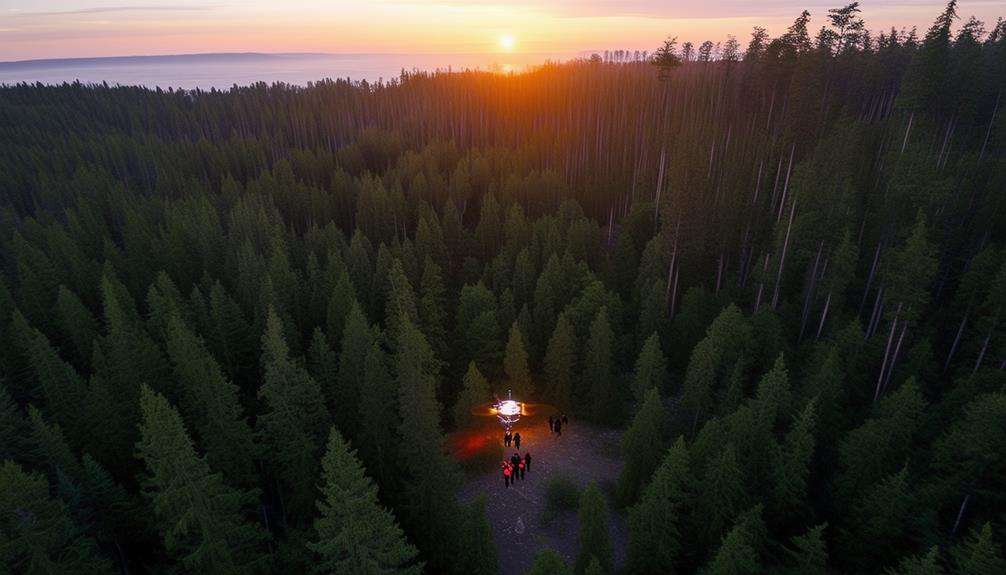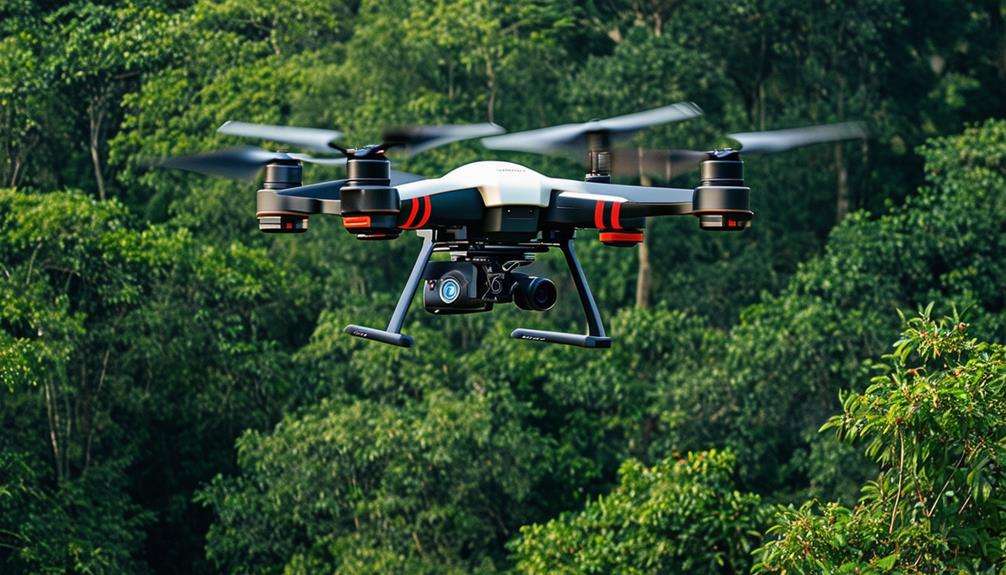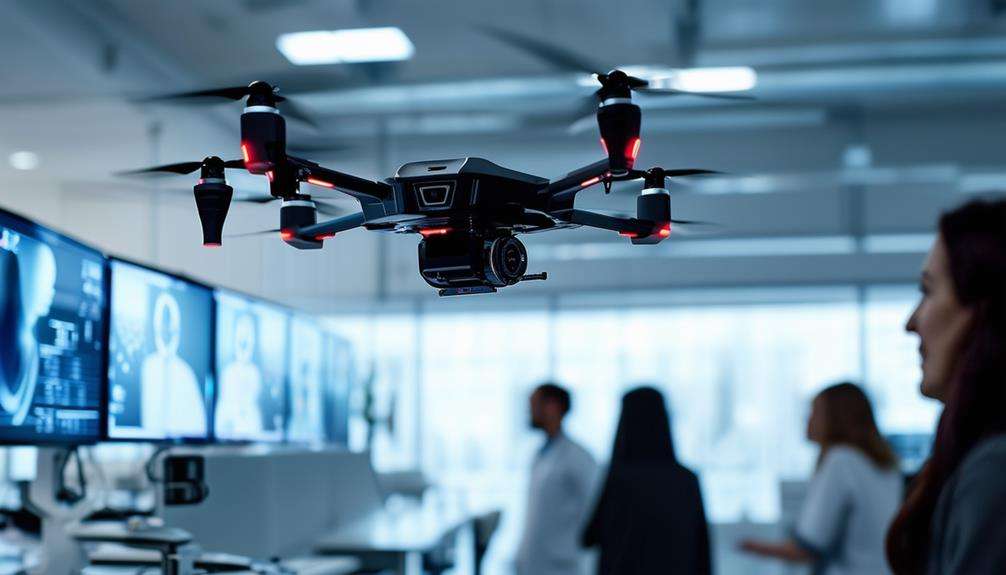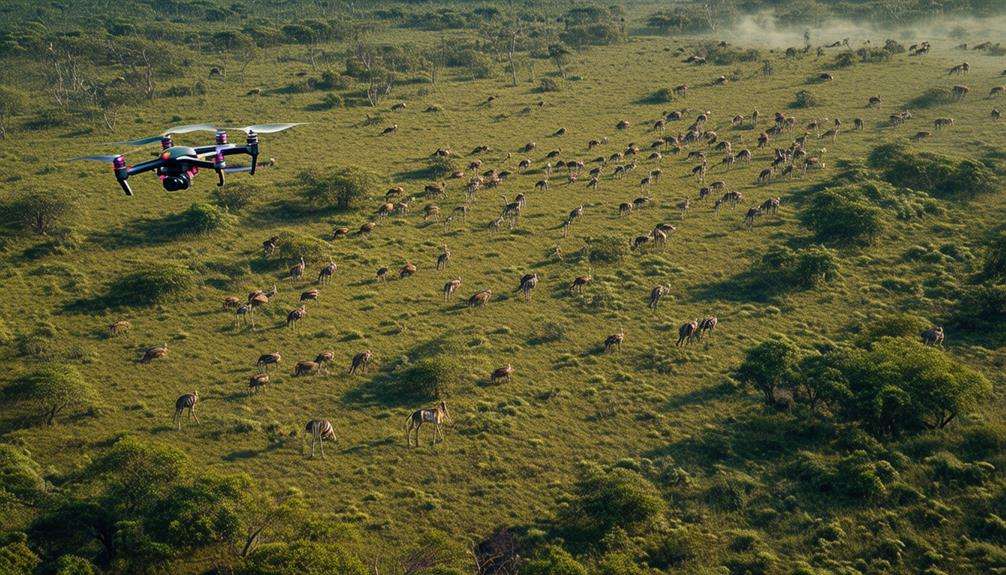Drones for Pollination: Assisting Plants in Remote Areas
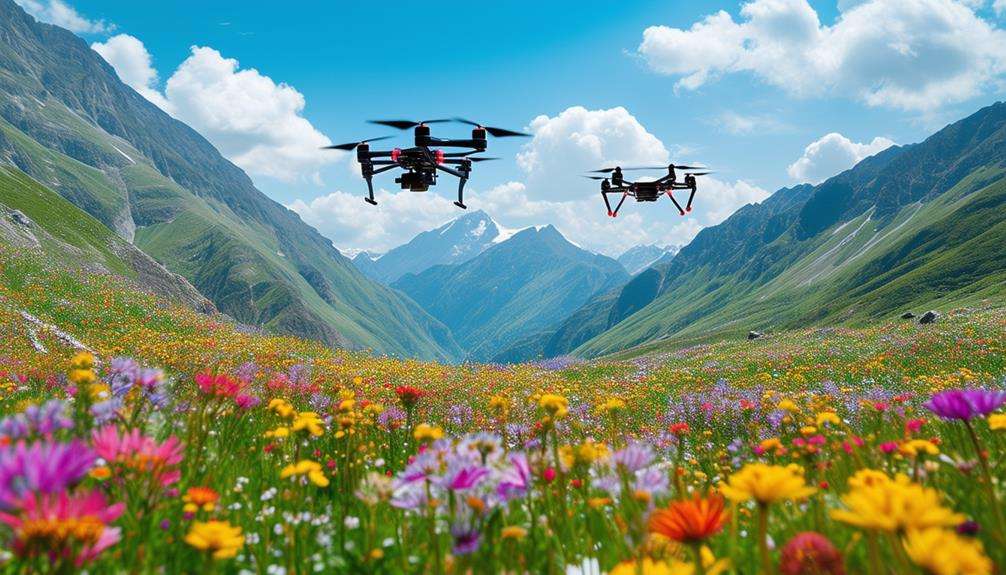
Imagine you're a farmer in a remote area grappling with the decline in bee populations. Drones for pollination could be an invaluable asset, offering a reliable solution for plant reproduction.
These advanced drones, equipped with sticky gel and horsehair bristles, ensure precise pollen transfer, significantly boosting crop yields. They are already making a notable impact in locations such as Himalayan apple orchards and Alaskan greenhouses.
But how do these drones navigate the unique challenges posed by such diverse environments? And what does the future hold for this groundbreaking technology?
Benefits of Pollination Drones
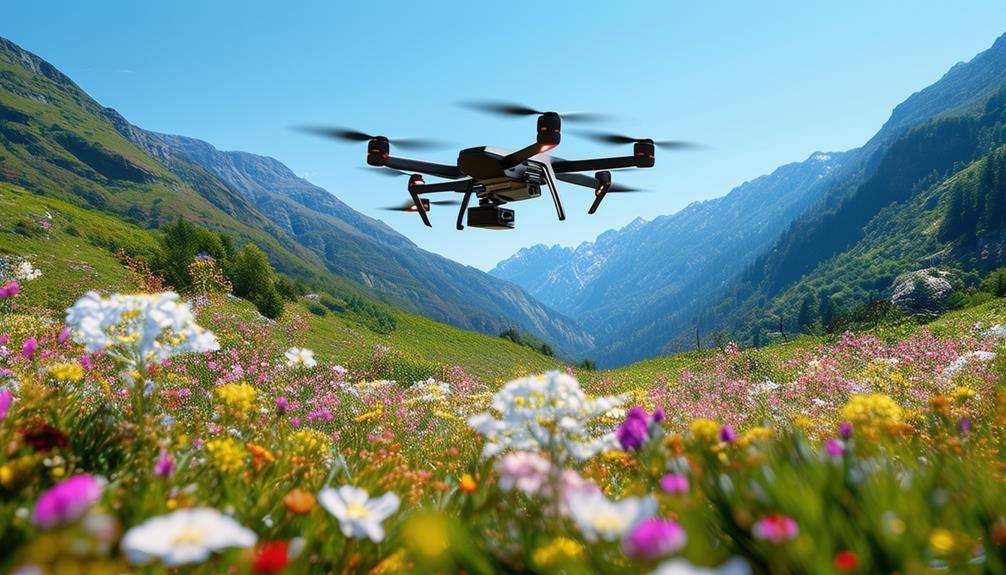
Pollination drones can significantly enhance crop yields by addressing the decline in honeybee populations. As honeybee colonies continue to diminish, these autonomous drones serve as essential pollinators. They effectively carry out the pollination process, ensuring that plants receive the necessary pollen to produce fruits and seeds. Guided by artificial intelligence, these drones navigate fields autonomously, making pollination more precise and efficient.
The advantages of using pollination drones are extensive. Firstly, they mitigate the reliance on natural bee populations, which have been decreasing at alarming rates and jeopardizing the production of two-thirds of the world's crops. Thus, artificial pollinators are becoming a critical alternative.
Additionally, these drones are cost-effective and require fewer resources compared to traditional manual pollination methods. They can also operate in various weather conditions, ensuring consistent crop pollination even when natural pollinators are unavailable.
Furthermore, autonomous drones can cover large areas swiftly, making them a reliable solution for large-scale agricultural operations. By adopting these advanced technologies, you not only protect your crops but also boost overall food production.
Therefore, integrating pollination drones provides a strategic advantage in modern agriculture.
Technology Behind Pollination Drones
Harnessing advanced technology, these drones use sticky gel and horsehair bristles to efficiently pick up and deposit pollen on flowers. Addressing the pollination crisis, these tiny drones act as artificial pollinators in areas where natural pollinators are scarce due to climate change. The sticky gel captures pollen, while the horsehair bristles ensure its effective transfer from one flower to another.
Remote-controlled drones form the backbone of this innovative approach. Equipped with four propellers, these drones navigate through fields, picking up pollen and ensuring it reaches each flower. The goal is to replicate the natural behavior of bees and other pollinators, mitigating the challenges posed by climate change.
Here's a quick comparison to highlight their capabilities:
| Feature | Benefit |
|---|---|
| Sticky gel | Efficient pollen capture |
| Horsehair bristles | Effective pollen transfer |
| Tiny drone size | Access to small, delicate flowers |
| Remote control | Precision in navigation |
| Artificial pollinators | Solution to pollination crisis |
Experiments with these insect-sized drones show immense promise. By intervening where natural pollinators fall short, these technological marvels could revolutionize agricultural pollination in remote and challenging environments.
Case Studies in Remote Areas
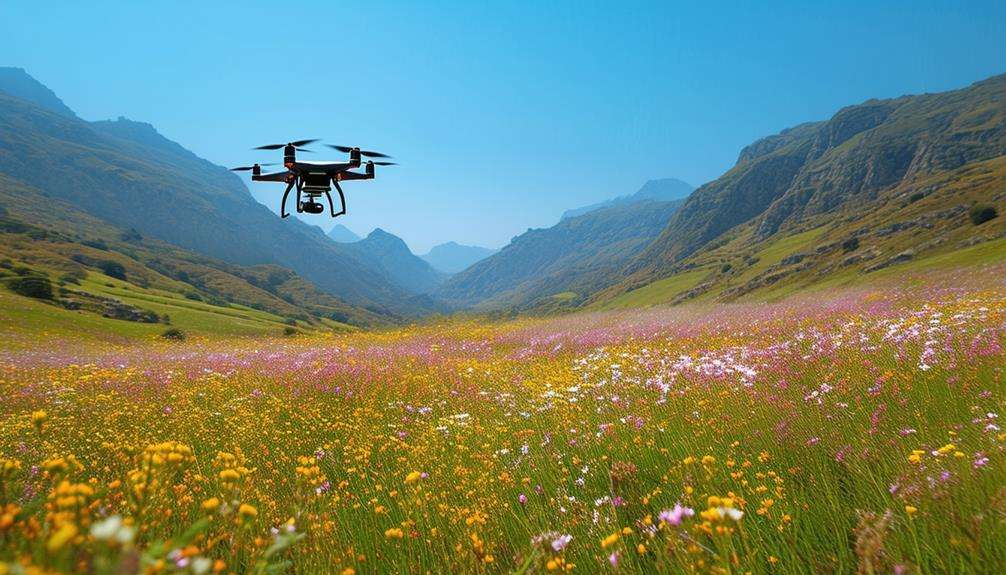
Drones have proven invaluable for pollination in remote areas where natural pollinators are scarce, ensuring crop production and food security by supporting plant reproduction. Let's explore some case studies that highlight the impact of this technology.
- Himalayan Apple Orchards: In the high-altitude orchards of the Himalayas, where bees struggle to thrive, drones have ensured the pollination of apple trees, thereby increasing agricultural productivity.
- Desert Farming in Saudi Arabia: In arid regions where traditional pollinators are virtually nonexistent, drones have successfully pollinated crops like dates and tomatoes, directly contributing to local food security.
- Australian Outback: Isolated farms in the Australian Outback face significant challenges. Drone pollination has provided a reliable solution, maintaining crop yields and supporting farmers' livelihoods.
- Alaskan Greenhouses: In Alaska, where outdoor growing seasons are short, drones have facilitated effective pollination within greenhouses, enhancing both productivity and crop variety.
Challenges and Solutions
While drone pollination has shown significant promise in remote areas, several challenges need to be addressed to optimize this technology. One major hurdle is ensuring effective pollen release onto plants. Utilizing GPS and artificial intelligence can refine drone pollination paths, guaranteeing precise and efficient coverage.
Technology is crucial in mitigating the impact of declining bee populations and global warming on natural pollinators. Deploying drone swarms can alleviate some of this pressure, but it's essential to fine-tune the coordination of these swarms for maximum effectiveness.
For artificial pollination methods to be widely adopted, they must be economically feasible. The costs of drones, maintenance, and operational expenses can be prohibitive, particularly in remote areas.
Additionally, solutions should account for the impact of global warming, which directly affects the availability and health of natural pollinators. While advanced technology can offer support, these systems must be sustainable and adaptable to changing environmental conditions.
Future Prospects for Drone Pollination
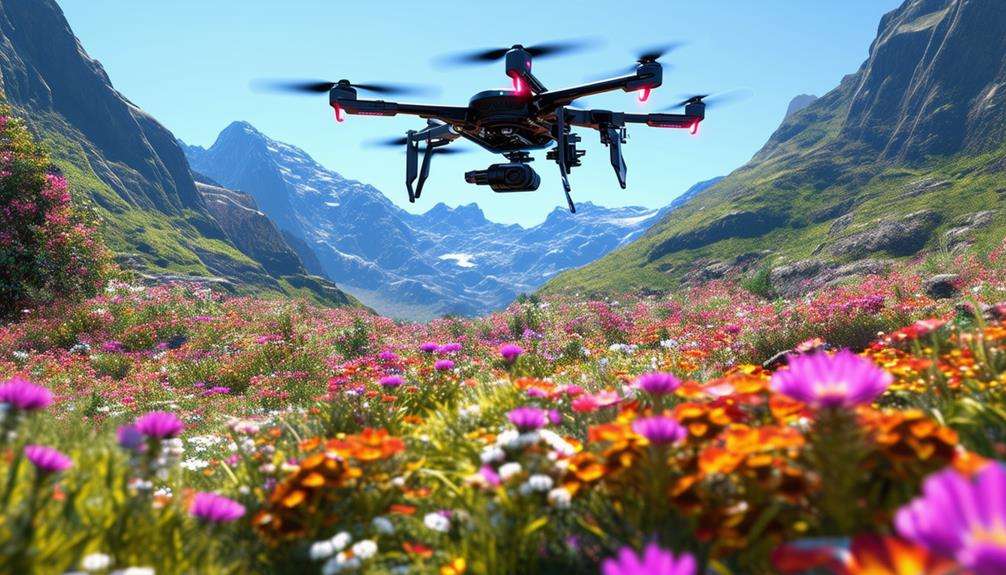
As drone technology advances, the future of drone pollination appears increasingly promising. With the rapid decline in bee populations, drones equipped with artificial intelligence are emerging as innovative solutions to ensure effective pollination. These drones can autonomously navigate through remote areas, offering hope to regions where traditional pollination methods struggle.
Here's what you can expect in the near future:
- Enhanced Autonomy: Drones will utilize advanced AI for precise and efficient autonomous navigation, ensuring accurate pollination.
- Collaborative Swarm Technologies: Projects like RoboBeeHive, where small drones work collectively, will revolutionize pollination capabilities.
- Crop Yield Improvement: Artificial pollination drones can significantly boost crop yields, especially in areas suffering from declining bee populations.
- Versatile Applications: Future drones will extend their capabilities beyond pollination to fields such as infrastructure inspection and search-and-rescue missions.
These technological advancements will make drones indispensable for pollination, particularly in remote areas. As AI continues to evolve, the synergy between drones and natural pollinators could lead to a balanced, sustainable approach to addressing agricultural challenges.
The future of drone pollination is indeed bright, offering a resilient solution to the pressing issue of declining bee populations.
Conclusion
Pollination drones are transforming agriculture in remote areas with their advanced technology. Proven successful in regions such as the Himalayas and Alaskan greenhouses, these drones are revolutionizing crop production.
Despite some challenges, continuous innovations offer promising improvements for the future. By adopting this technology, you aren't only boosting crop yields but also enhancing food security and sustainability.
The future of farming is here, and it's buzzing with potential.

